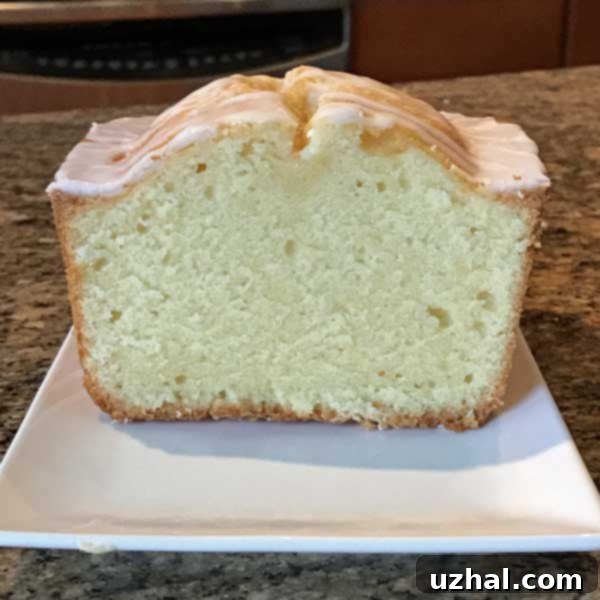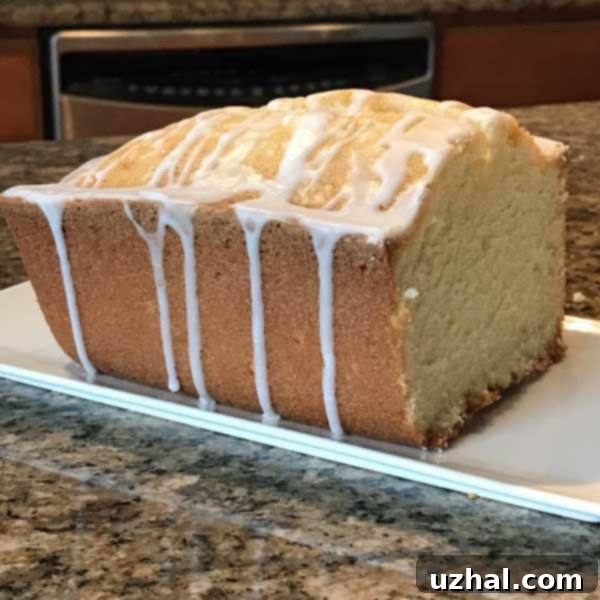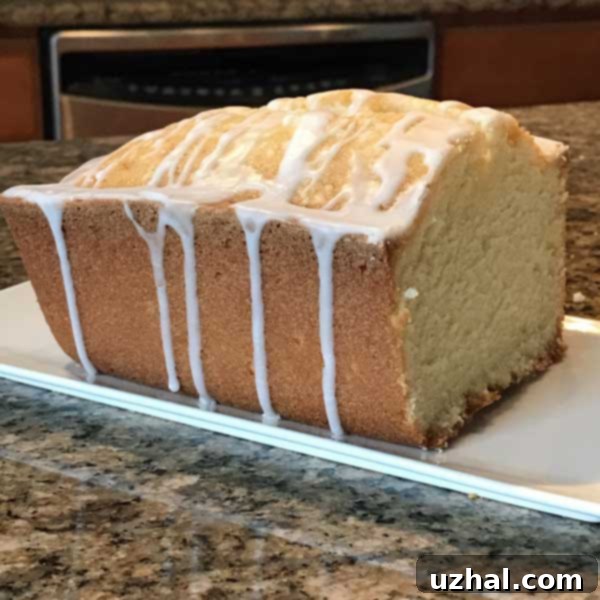Elevate Your Baking with the Ultimate Boyajian Lemon Oil Pound Cake Recipe
There are days when nothing quite satisfies like the bright, refreshing taste of a classic lemon cake. Just recently, I found myself craving that delightful citrus zing, and it finally dawned on me: I hadn’t yet indulged in the highly acclaimed Boyajian Lemon Oil Pound Cake. This particular recipe had been on my radar for quite some time, and as a dedicated user and admirer of Boyajian products, I knew it was long overdue. Their lemon oil, in particular, has become a staple in my kitchen, consistently outperforming traditional lemon extracts. The difference is truly remarkable; it delivers a cleaner, far more natural and intense lemon flavor, devoid of any artificial aftertaste often associated with extracts. A small amount of this potent oil goes a surprisingly long way, infusing baked goods with an unparalleled aromatic quality that captivates the senses.

What truly sets this lemon pound cake apart is its thoughtful construction and the impact of the star ingredient. The full, original version of this recipe calls for a generous tablespoon of Boyajian lemon oil, which is pivotal in achieving its wonderfully vibrant and authentic lemon taste. Unlike many cakes that rely heavily on chemical leaveners, this batter incorporates a very minimal amount of baking soda. This, combined with a slow bake at a lower temperature for approximately 1 ½ hours, allows the cake to rise gradually and evenly, resulting in a beautifully shaped dome. This meticulous baking process is key to developing its signature texture: a tight, fine crumb that remains remarkably light, moist, and tender. Each slice offers a rich, buttery, and intensely lemony experience that truly embodies the essence of a premium pound cake.

Versatile Baking: Loaf Cake or Tube Cake
While the Boyajian Lemon Oil Pound Cake recipe is often presented for a Bundt or tube pan, offering that classic ring shape, its versatility allows for adaptation to various baking vessels. I recall having a direct link to the original recipe, but websites, much like culinary trends, tend to evolve. The most reliable way to access their complete recipe collection is always through the official Boyajian website. For my recent baking endeavor, I specifically desired a loaf pan size cake, perfect for easy slicing and sharing. To achieve this, I thoughtfully halved the original recipe quantities and, importantly, made a slight increase to the salt content to ensure all the flavors remained balanced and pronounced in the smaller format. This adjusted recipe was then baked to perfection in a trusty Pyrex loaf pan, which consistently delivers excellent results due to its even heat distribution. Whether you opt for a traditional Bundt pan for an elegant presentation or a simple loaf pan for everyday enjoyment, the core essence of this spectacular lemon pound cake remains delightfully consistent.
- Butterscotch Marshmallow Bars: A Sweet Treat
- Adams Extract Pound Cake: Exploring Different Flavor Profiles
- Cinnamon Roll Pound Cake: A Cozy Indulgence
- Lemon Lush Instant Pudding Dessert: Quick & Zesty
- White Chocolate Chunk Lemon Cookies: A Perfect Pair
Recipe: Mastering the Boyajian Lemon Pound Cake

Boyajian Lemon Pound Cake
Anna
Pin Recipe
Ingredients
For the ultimate Boyajian Lemon Pound Cake, selecting high-quality ingredients is paramount. Room temperature eggs, butter, and sour cream are crucial for a smooth, emulsified batter, preventing curdling and ensuring a consistently tender crumb. The star, Boyajian lemon oil, provides a pure, concentrated citrus punch that truly sets this cake apart from any other lemon dessert you’ve tried.
- 3 large large eggs Make sure these are at room temperature for optimal mixing.
- 1 ½ sticks unsalted butter, softened (175 grams, also at room temperature)
- 1 ¼ cups granulated or superfine sugar (230 grams; superfine sugar dissolves more readily, contributing to a finer crumb.)
- ½ cup sour cream, room temperature (114 grams; provides moisture and a subtle tang that balances the sweetness.)
- 1 ½ teaspoons Boyajian lemon oil (Do not substitute with lemon extract if you want the best flavor!)
- ¼ teaspoon salt (Enhances all the other flavors.)
- ⅛ teaspoon baking soda (Just a tiny amount for a gentle rise and tender texture.)
- 1 ½ cups 180 grams sifted all-purpose flour (measure AFTER sifting) (Sifting makes the cake lighter and prevents lumps.)
Icing:
- 1 ½ tablespoons of fresh lemon juice (Freshly squeezed is best for vibrant flavor.)
- Confectioners sugar as needed About ⅓ to ½ cup, adjusted for desired consistency and sweetness.
Instructions
Follow these detailed steps carefully to achieve a perfect Boyajian Lemon Pound Cake. Precision in baking ensures the ideal texture and flavor every time.
-
Begin by preparing your oven and baking pan. Preheat your oven to 300 degrees F (150 degrees C). This lower temperature is crucial for the slow rise and fine crumb characteristic of a pound cake. Thoroughly grease and flour a 9×5 inch loaf pan, ensuring every surface is coated to prevent sticking and guarantee a clean release. A Pyrex loaf pan, known for its even heat conduction, consistently yields excellent results.
-
In a separate medium-sized bowl, crack the three large room temperature eggs. Using a whisk or hand mixer, beat them until they are uniformly yellow and slightly frothy. Setting them aside now ensures they are ready to be incorporated smoothly into the butter mixture later, promoting a stable emulsion.
-
In the bowl of a stand mixer fitted with the paddle attachment, or using a large bowl and a hand mixer, cream together the softened unsalted butter and granulated (or superfine) sugar. Beat on medium speed for about 3-5 minutes, or until the mixture is light, fluffy, and pale yellow. This creaming process incorporates air, which is vital for the cake’s texture. Next, add the beaten eggs, room temperature sour cream, Boyajian lemon oil, and salt all at once. Continue to beat on medium speed for approximately two minutes until all ingredients are thoroughly combined and the batter appears homogenous. Finally, beat in the baking soda, ensuring it’s evenly distributed throughout the mixture.
-
Reduce the mixer speed to low (or switch to mixing by hand with a spatula). Gradually add the sifted all-purpose flour, a quarter cup at a time, mixing only until it is just combined and no dry streaks remain. It is essential not to overbeat the batter once the flour has been added, as overmixing can develop the gluten too much, leading to a tough, dense cake. A final gentle stir by hand ensures everything is mixed without overworking the gluten.
-
Carefully pour the prepared batter into your greased and floured loaf pan. Use an offset spatula or the back of a spoon to spread the batter evenly across the pan, paying attention to the corners. To help remove any trapped air bubbles and promote a level top, draw the scraper or the tip of your spatula through the center of the batter lengthwise. This simple trick can contribute to a more uniform rise and structure.
-
Place the pan in the preheated 300°F (150°C) oven and bake for 90 minutes. The low and slow baking process is fundamental for a moist pound cake with a fine crumb. To check for doneness, insert a wooden skewer or toothpick into the center of the cake; it should come out clean or with a few moist crumbs attached. If your oven tends to bake unevenly, you might rotate the pan halfway through the baking time.
-
Once baked, remove the cake from the oven and let it cool in the pan on a wire rack for about 10-15 minutes. This allows the cake to firm up slightly and prevents it from breaking when unmolded. After this initial cooling, carefully invert the cake onto the wire rack and let it cool completely before icing. Cooling completely is crucial for the icing to set properly without melting.
-
To prepare the delightful lemon icing, pour the fresh lemon juice into a large glass measuring cup or a small bowl. Gradually add confectioners’ sugar, a few spoonfuls at a time, whisking continuously until the icing reaches a thin, drizzly consistency. You’ll likely use between ⅓ to ½ cup of confectioners’ sugar, but adjust based on your preference for thickness. Once the cake is completely cool, generously spoon or drizzle the icing over the top, allowing it to cascade down the sides. Let the icing set for at least 15-20 minutes before serving, allowing the flavors to meld beautifully.
Notes
